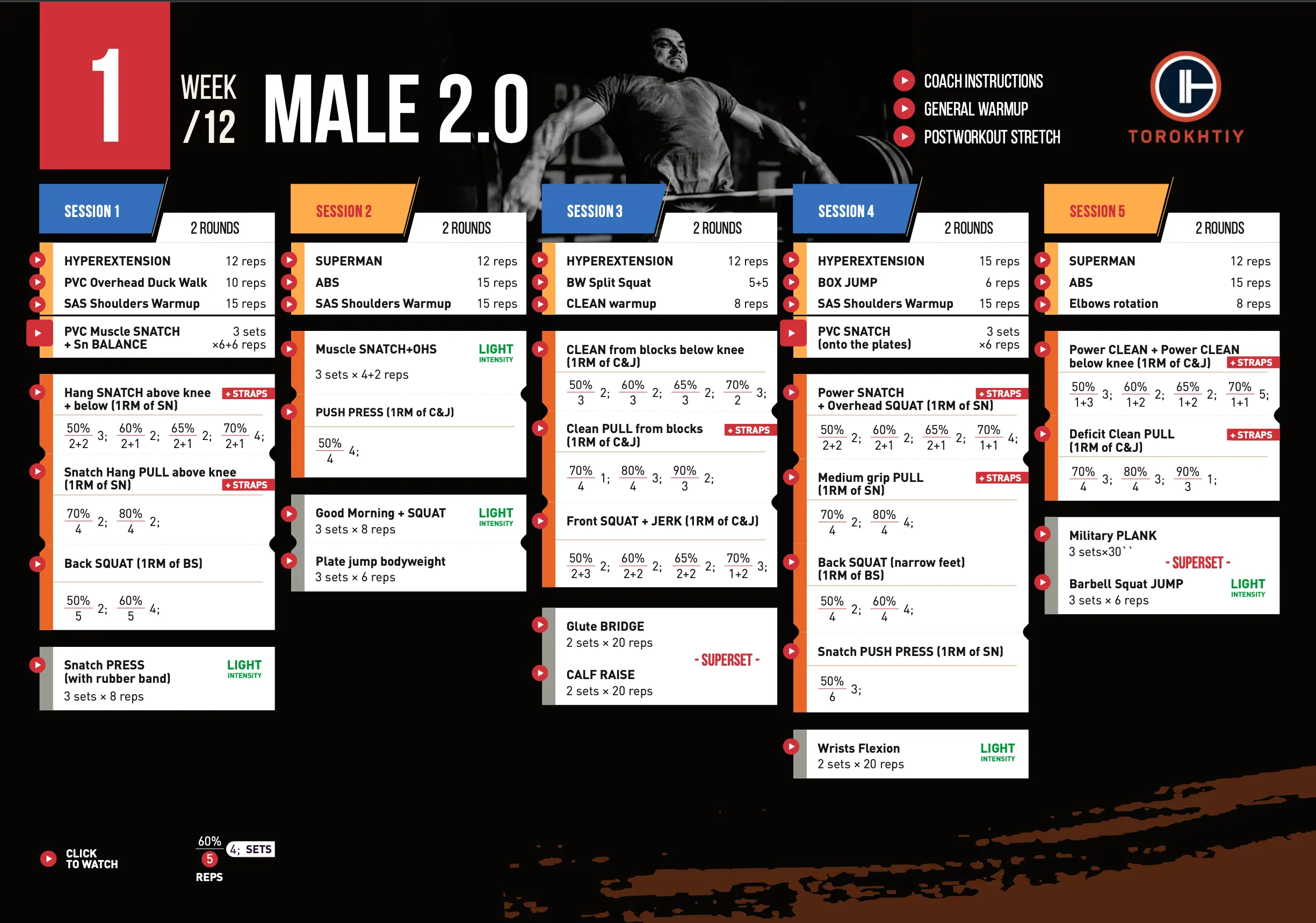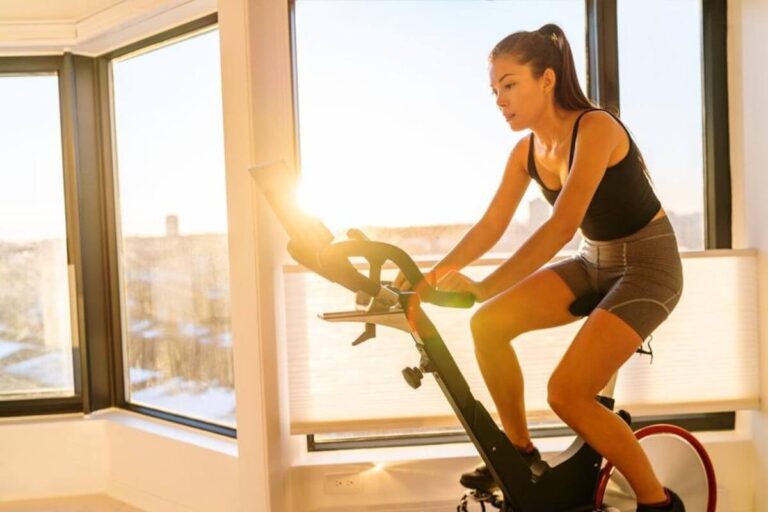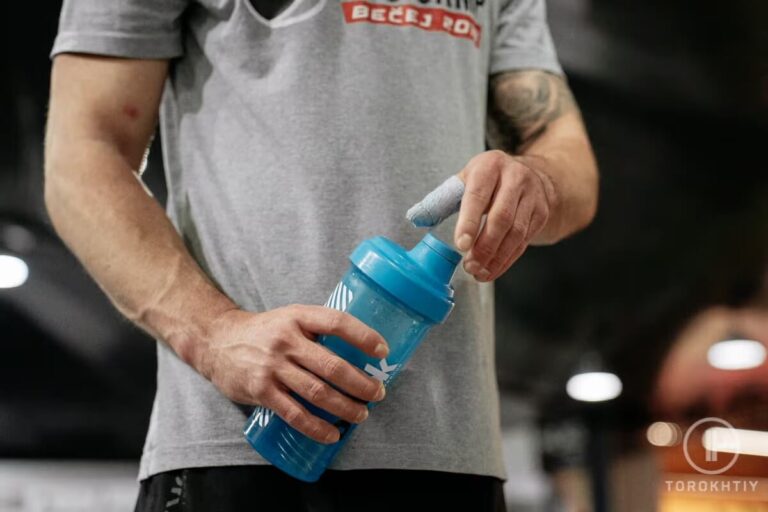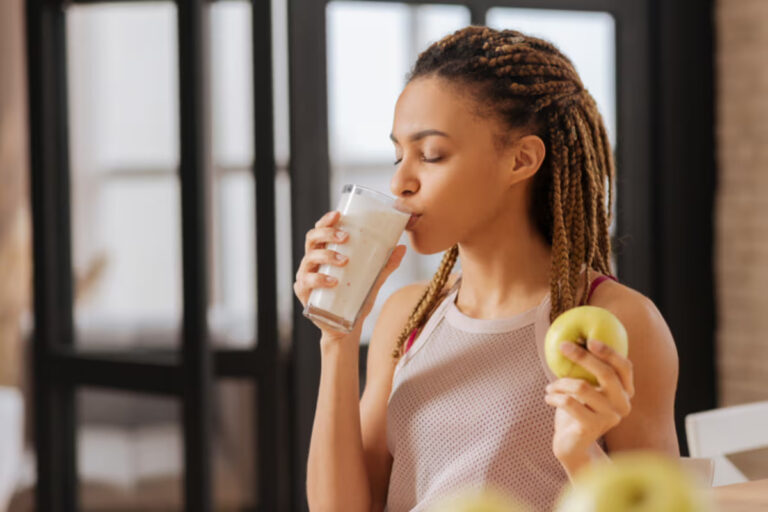Snatch & Hands
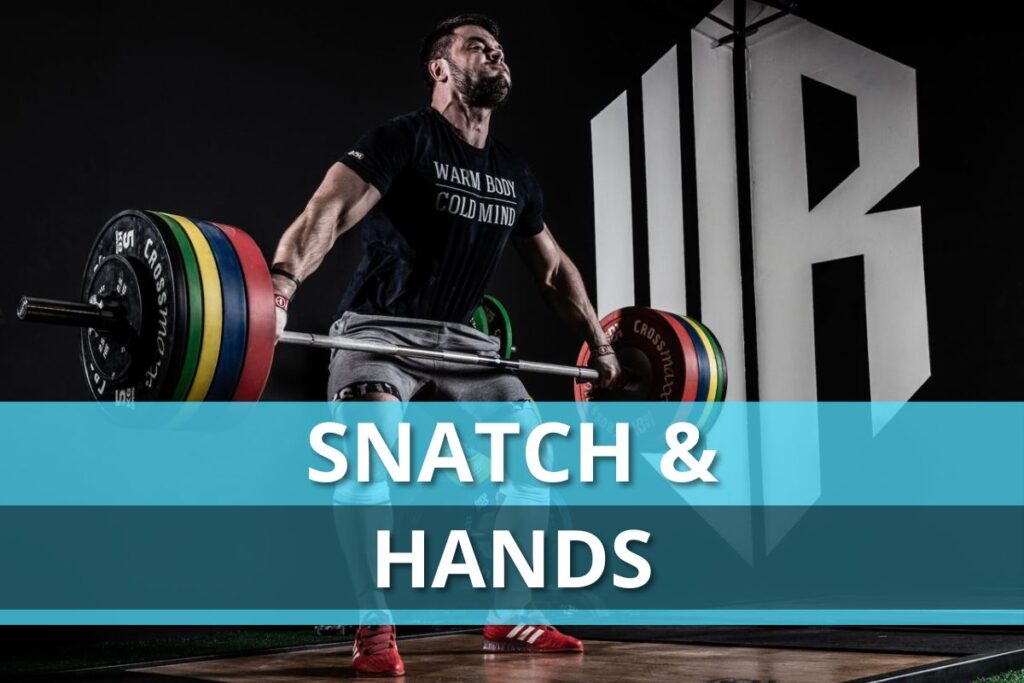
In all seriousness I can say that hands and snatch is a very philosophical question. Years of my coaching practice show: strong arms may not only not help, but also might prevent progress.
Of course, the work of your arms in snatch is a complex coordination between bones and muscles under a high load, including compression. There are different schools, methods and sequences to initially learn the snatch technique: some coaches learn to jump first and pay attention to the correct extension algorithm, others thoroughly master the progression of muscle snatch, and only then add jump elements and power position. Each of these progressions has their own merit.
Coming into the gym for a training session, I very often meet physically strong weightlifters who try to perform a power muscle snatch standing almost 85%. They believe and hope that a big power “reserve” will help them in snatch performance. Yes, muscle snatch is a good and necessary exercise for athletes of all levels, but have you ever wondered what the whole purpose of this exercise is?
In my opinion, the main goal of performing muscle snatch is to work out an arms movement pattern, and the right tempo for your muscles. I often hear from athletes that this exercise allows them to make their arm muscles stronger, strengthen ligaments and joints, and increases their confidence when catching. Yes, this exercise can make arms very strong, but in turn this can make them slow and bulky, and we all know how important arm speed is in snatch.
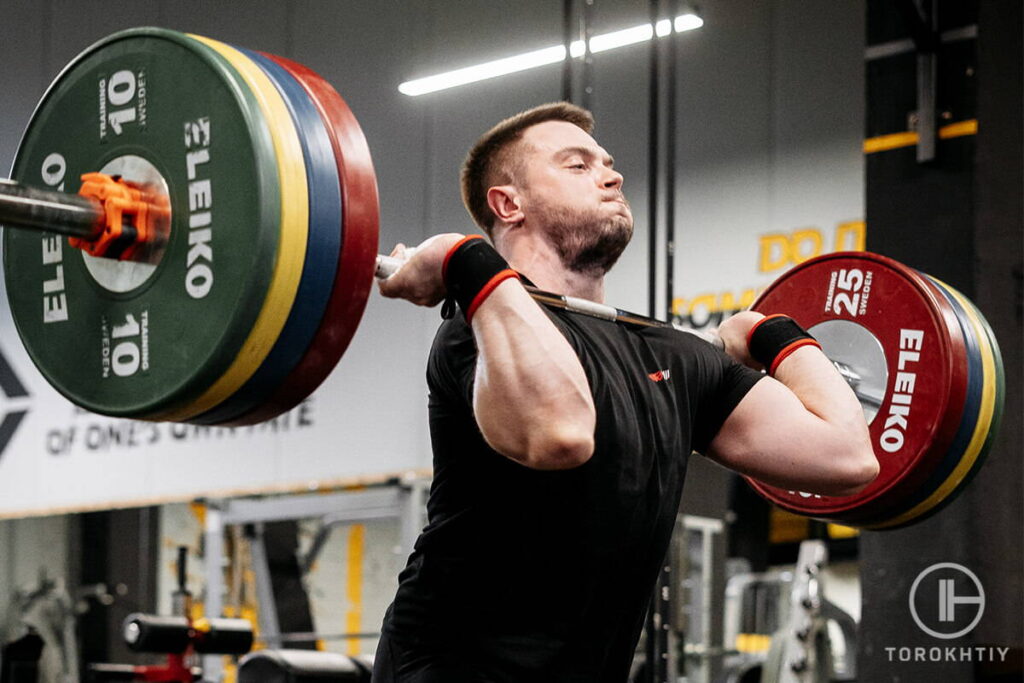
The thing is that in snatch, an athlete does not perform muscle snatch as an element of the movement at all. In fact, the mechanics of the arm work is similar, but the athlete does not lift the barbell up, but instead tries to get under it as quickly as possible. In this phase of the movement, the athlete provides a flight path at the expense of their arms which is as close to the body as possible.
Young and inexperienced athletes often do not catch the huge difference between the technique of a movement, and the power of a movement. As an example, beginning athletes, even at a warm-up with a 40-60% weight, going at the barbell as if they were going for a world record. Logically they should know the difference, but they get caught up in the moment.
Everyone knows that the coordination of snatch and catching position in the OH position represents a big problem for so many athletes. Therefor, my opinion is that a lot of attention needs to be given to both arms and shoulders with the help of various special exercises. Not in order to develop “goofy power,” but to make the upper body flexible and mobile, and joints and ligaments reliable and elastic. This is because these qualities will not only improve your technique, but also protect you from injury if something goes wrong.
🔻12-Week Olympic Weightlifting Program by Oleksiy Torokhtiy
Transform your strength and technique with our 12-week Olympic Lifting Program, made up of 5 sessions per week.
It is designed by Olympic Champion for athletes who are looking to set new personal records safely in Snatch or Clean & Jerk.
Program details:
- 12 weeks + 2 bonus weeks
- 45-120 minutes per session
- 50+ specific exercises/98 video instructions
- Primary focus on Olympics Lifts
- Full access to all training content
- Weekly video coach instructions
Start now and boost your weightlifting results!
So, the main task of arms and the entire upper limbs is control, and to ensure the optimal trajectory of the barbell. Of course, the power of the arms makes a contribution to the snatch, but only by 20-30%, not by 85%.
My coach always told me that snatch is a jump, and as we know the jump is not carried out by arms, but by LEGS.
TRAIN TOGETHER – TRAIN RIGHT
You might be interested in:
Why Trust Us?
With over 20 years in Olympic Weightlifting, our team does its best to provide the audience with ultimate support and meet the needs and requirements of advanced athletes and professional lifters, as well as people who strive to open new opportunities and develop their physical capabilities with us.
By trusting the recommendations of our certified experts in coaching, nutrition, dietology, and sports training programming, as well as scientific consultants, and physiotherapists, we provide you with thorough, well-considered, and scientifically proven content. All the information given in the articles concerning workout programming, separate exercises, and athletic performance, in general, is based on verified data. We ensure that you can rely on our professionals’ pieces of advice and recommendations that can be treated as personalized ones which will benefit you and fully meet your needs.
The product testing process is described in more detail here
Author: Sergii Putsov
Head of Sport Science, PhD
Best Results: Snatch – 165 kg,
C&J – 200 kg
Sergii Putsov, Ph.D., is a former professional weightlifter and National team member, achieving multiple medals in the 94 kg weight category at national competitions. With a Master’s degree in “Olympic & Professional Sport Training” and a Sport Science Ph.D. from the International Olympic Academy, Greece, Sergii now leads as the Head of Sport Science. He specializes in designing training programs, writing insightful blog articles, providing live commentary at international weightlifting events, and conducting educational seminars worldwide alongside Olympic weightlifting expert Oleksiy Torokhtiy.

